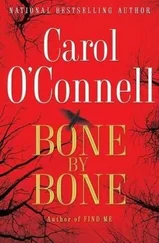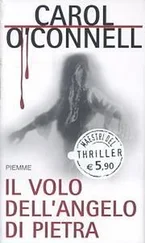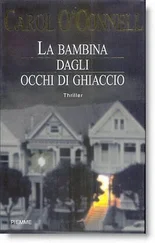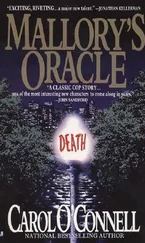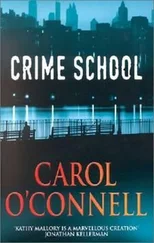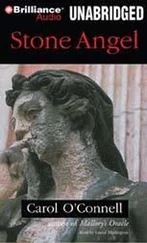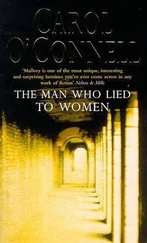Carol O’Connell - Killing Critics
Здесь есть возможность читать онлайн «Carol O’Connell - Killing Critics» весь текст электронной книги совершенно бесплатно (целиком полную версию без сокращений). В некоторых случаях можно слушать аудио, скачать через торрент в формате fb2 и присутствует краткое содержание. Жанр: Триллер, на английском языке. Описание произведения, (предисловие) а так же отзывы посетителей доступны на портале библиотеки ЛибКат.
- Название:Killing Critics
- Автор:
- Жанр:
- Год:неизвестен
- ISBN:нет данных
- Рейтинг книги:3 / 5. Голосов: 1
-
Избранное:Добавить в избранное
- Отзывы:
-
Ваша оценка:
- 60
- 1
- 2
- 3
- 4
- 5
Killing Critics: краткое содержание, описание и аннотация
Предлагаем к чтению аннотацию, описание, краткое содержание или предисловие (зависит от того, что написал сам автор книги «Killing Critics»). Если вы не нашли необходимую информацию о книге — напишите в комментариях, мы постараемся отыскать её.
Killing Critics — читать онлайн бесплатно полную книгу (весь текст) целиком
Ниже представлен текст книги, разбитый по страницам. Система сохранения места последней прочитанной страницы, позволяет с удобством читать онлайн бесплатно книгу «Killing Critics», без необходимости каждый раз заново искать на чём Вы остановились. Поставьте закладку, и сможете в любой момент перейти на страницу, на которой закончили чтение.
Интервал:
Закладка:
He took the photographs from her hand, riffled through them, pulled one out and turned it over to display a label. “This one has notes. It’s tagged for Oren Watt. That’s one set of footprints we had an easy match for. And his shoes were still bloody when his psychiatrist surrendered him to the police.”
Charles had the sense that Riker was playing a game of push and shove with Mallory. She chose to let him play alone. Her voice was casual, and her face turned down to the contents of the carton. “Any idea who tipped off the newspapers?”
“Probably Oren Watt,” said Riker, draining his coffee cup. “Watt wouldn’t be the first psychopath with a craving for publicity.”
“Oren Watt didn’t do it.” There was a definite edge to her voice this time.
“Both things could be true,” Charles suggested in the gentle manner of a peacemaker. “Watt could have made that call whether he did the murders or not.”
Mallory nodded, seeming to like that idea. Riker would not look at her. He moved away to stand by the door and stare into his empty cup.
Charles stepped between them. “What can I do to help?”
“You’re taking me to the ball tomorrow night,” said Mallory.
“You can’t mean the Manhattan Charities Ball. Is that tomorrow?”
“Yes, Charles.” She stood up and walked to her desk.
“But no one actually goes to the ball.”
“You buy the tickets every year.” She opened the desk’s center drawer and pulled out the printed invitations and receipts. Mallory held them up to him, as though she had just caught him in a lie.
She must have retrieved the invitations from the waste-basket in the reception room where he filed them every year. She could only have found the receipts in his private files. One day they really must sit down and discuss what his privacy meant to him, as opposed to what little it meant to her.
For the moment, he only shrugged. “Well, of course I buy the tickets. It’s a charity event. My mother was a friend of Mrs. Quinn’s. We’ve always bought the tickets, but no one actually goes to the ball.”
“The mayor goes,” said Riker.
“Well, yes, but he’s not-” Here Charles stopped himself from saying that the mayor did not come from a Social Register family, that he was merely the leader of the largest city on earth. “Yes, I suppose the city’s power structure will be there. You’re quite right. But I don’t know anyone who goes.”
“J. L. Quinn will be there, and you know him.” Mallory turned to face the rear wall. It was covered with cork and functioned as a giant bulletin board. “You were at Harvard the same time Quinn was.”
Charles wasn’t about to ask her how she knew that. He was staring at her computers, which sometimes did double duty as cyberspace burglary tools.
“Well, Quinn has to go,” he said somewhat defensively. “His mother hosts the ball.”
“And Aubry’s father-the architect, Gregor Gilette?” She pinned the old photograph of Aubry’s funeral to the wall. “He’ll be at the ball. You know him, too, don’t you?”
As if there was any doubt in her mind about any sector of his formerly private life. “Gregor also has to go. He was married to Mrs. Quinn’s daughter.”
“Sabra?” Mallory walked back to the carton and sifted through the paperwork bundles, scanning a page in each one. She turned to Riker. “Just the one name everywhere Aubry’s mother is listed. Why isn’t it Sabra Gilette?”
Riker shrugged. “Sabra was her full legal name, just the one name.”
Mallory looked to Charles for enlightenment.
“Sabra renounced the family name and walked away from the money. Then she became wildly successful on her own. She was an enormously talented painter. Later, she set a legal precedent when she married Gregor Gilette and refused to take his name. She-”
“Do you remember seeing Sabra at Aubry’s funeral?”
“Yes, it was the last time I ever saw her.”
Mallory was deep in the interrogation mode now. She had reached her limit for six minutes of semicivil conversation. “Did you like Sabra?”
“Yes, very much. I also liked her work. I have one of her early paintings.” Suddenly he wished he had not told her that. And now she would want to know-
“Where is it?”
Charles and Mallory walked across the hall to the apartment which was his residence. Beyond the foyer, a bank of tall windows made the front room light and airy, despite the heavy furnishings in dark woods spanning four centuries of craftsmen. All that belonged to his own era were the contemporary works of art. They should not have worked well with the older pieces, and yet they did. The colors of a splatter painting agreed with the bright details of the Persian rug and the upholstery of a George III side chair. Another abstract repeated the rococo lines of a Belter sofa.
They walked down the wide hallway, where late twentieth-century drawings were on close hanging acquaintance with framed pages of illuminated manuscripts. At the end of the hall, he opened a linen closet and pointed to a framed canvas sitting on the floor, face to the wall. He lifted it carefully and handed it to her. The painting had a lonely, sad feel to it. One small pale worm of an element writhed in a maelstrom of powerful bold color.
“Don’t you like it, Charles?”
“I like it very much. It’s one of her most accessible works. I bought it at a Christie’s auction a few years ago.”
“Why do you keep it on the floor of a closet?”
He shifted uncomfortably, not wanting to answer her. He kept it in the closet because what it communicated was so obvious, so blatant that his cleaning woman, Mrs. Ortega, had readily understood it. That high school dropout who loved baseball and hated art, Mrs. Ortega, had understood the painting so clearly that Charles had been embarrassed when the normally hostile cleaning woman had gone out of her way to be nice to him for several weeks after she had seen the painting on the wall of his front room. So this is what your guts look like , Mrs. Ortega’s uncharacteristic kindness had said to him, you poor jerk .
Now he wondered if Mallory was drawing the same inference.
“Charles, can we hang this in my office for a while? Just till I wrap the case? Oh, and your collection of art catalogs? Do you have one of Sabra’s museum retrospective?”
They returned to the office with the painting and the catalog. Mallory set the canvas against the cork wall, which Riker was littering with clippings, photographs and reports. Mallory followed behind him, straightening every sheet with machinelike precision. Finally, she slapped Riker’s hand away and forbade him to touch the board at all.
Charles sat at Mallory’s desk. Riker looked over his shoulder as he turned the pages of the museum catalog, hunting for photographs of the elusive Sabra. Here and there, Charles would point out a turned face, the line of a cheek. A hand raised to blind the camera’s eye.
“What’s with this broad?” said Riker. “There’s not one clear photograph of her.”
“She hated the sight of a camera,” said Charles. “Sabra was always reclusive. She very rarely appeared in public. An agent submitted her work through one gallery, and I’m not sure she ever met with the gallery director.”
Mallory turned away from her work on the cork wall. “Was it Koozeman’s gallery?”
“Oh, no,” said Charles. “Sabra was a major talent. She showed in the most prominent gallery on Fifty-seventh Street. In those days, Koozeman only had a small storefront gallery in the East Village-the one where Sabra’s daughter was murdered.”
“Here’s one of Sabra’s kid.” Riker pointed to the photograph of a young woman standing by a painting. “Pretty girl. Did you know Aubry very well?”
Читать дальшеИнтервал:
Закладка:
Похожие книги на «Killing Critics»
Представляем Вашему вниманию похожие книги на «Killing Critics» списком для выбора. Мы отобрали схожую по названию и смыслу литературу в надежде предоставить читателям больше вариантов отыскать новые, интересные, ещё непрочитанные произведения.
Обсуждение, отзывы о книге «Killing Critics» и просто собственные мнения читателей. Оставьте ваши комментарии, напишите, что Вы думаете о произведении, его смысле или главных героях. Укажите что конкретно понравилось, а что нет, и почему Вы так считаете.

